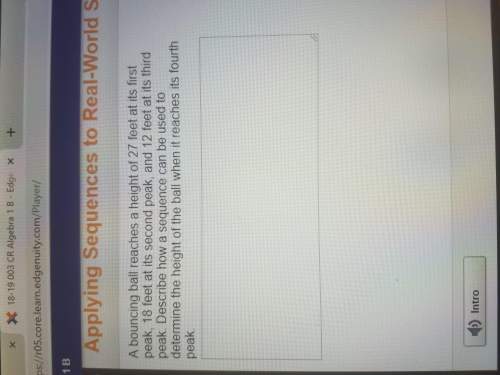
Mathematics, 11.07.2019 11:50 jenn8055
Valentine purchased 200 beads for $48 to make necklaces. if she needs to buy 25 more beads, how much will she pay if she is charged the same rate?

Answers: 1


Other questions on the subject: Mathematics

Mathematics, 21.06.2019 17:00, SillyEve
In tossing one coin 10 times, what are your chances for tossing a head? a tail? 2. in tossing one coin 100 times, what are your chances for tossing a head? a tail? 3. in tossing one coin 200 times, what are your chances for tossing a head? a tail? deviation = ((absolute value of the difference between expected heads and observed heads) + (absolute value of the difference between expected tails and observed tails)) divided by total number of tosses. this value should always be positive. 4. what is the deviation for 10 tosses? 5. what is the deviation for the 100 tosses? 6. what is the deviation for 200 tosses? 7. how does increasing the total number of coin tosses from 10 to 100 affect the deviation? 8. how does increasing the total number of tosses from 100 to 200 affect the deviation? 9. what two important probability principles were established in this exercise? 10. the percent of occurrence is the obtained results divided by the total tosses and multiplied by 100%. toss the coins 100 times and record your results. calculate the percent occurrence for each combination. percent head-head occurrence: percent tail-tail occurrence: percent head-tail occurrence:
Answers: 3

Mathematics, 21.06.2019 22:30, imanim3851
If you prove that ∆wxz is congruent to ∆yzx, which general statement best describes what you have proved?
Answers: 3


Mathematics, 22.06.2019 05:00, jxcxhxwxll
Three consecutive even numbers have a sum between 84 and 96. a. write an inequality to find the three numbers. let n represent the smallest even number. b. solve the inequality. a. 84 ≤ n + (n + 2) + (n + 4) ≤ 96 b. 78 ≤ n ≤ 90 a. 84 < n + (n + 2) + (n + 4) < 96 b. 26 < n < 30 a. 84 < n + (n + 1) + (n + 2) < 96 b. 27 < n < 31 a. n + (n + 2) + (n + 4) < –84 or n + (n + 2) + (n + 4) > 96 b. n < –30 or n > 31
Answers: 1
You know the right answer?
Valentine purchased 200 beads for $48 to make necklaces. if she needs to buy 25 more beads, how much...
Questions in other subjects:

Geography, 29.12.2019 12:31



Social Studies, 29.12.2019 12:31


English, 29.12.2019 12:31




Biology, 29.12.2019 12:31




